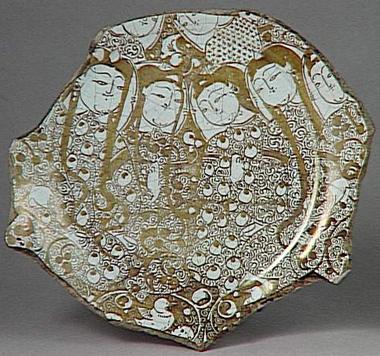Votre panier est vide
Besoin d'inspiration ?
Rendez-vous dans le programme en ligne du GrandPalais
Article -


In China
The art of ceramics had a key place in Chinese courts. In the 8th century, statuettes (Mingqi) from the Tang Dynasty (618-907) rivalled each other for elegance and originality. There was a wide variety of subjects: court ladies, public officials, dancers, traders travelling in caravans, etc. Porcelain, manufactured in China since the first centuries of our era, became an exceptionally high quality ceramic due to its durability, its whiteness and above all its translucency, obtained from the 11th century. Under the Yuan Dynasty (1279-1368), it was covered with cobalt blue and was increasingly manufactured in order to be sold to other countries (Korea, Japan, Iran, etc.).
In Europe
In Europe, this ceramic is only mentioned from the 13th century, following the travels of the famous Marco Polo. From the 15th century, its blue and white decorated pieces would be admired and envied by numerous countries who would try for centuries to imitate it, to find the secret of this “white gold” which would only be revealed in the 18th century.
The Byzantine Empire
The Byzantine Empire produced glazed ceramics. The Islamic world invented faience (in Mesopotamia in the 8th or 9th century). It covered every surface, from the floor to the walls. Decorated with geometrical and floral motifs, as well as people, it was sometimes produced in metallic colours to imitate silver and gold and would spread to the whole of the Mediterranean basin. Also produced in Spain, where it is referred to as Hispano-Moorish ceramic, it was the inspiration for the first Italian majolicas of the Renaissance.

Votre panier est vide
Besoin d'inspiration ?
Rendez-vous dans le programme en ligne du GrandPalais
See content : 'Les métamorphoses du Grand Palais': a France 5 and france.tv documentary to watch again!

Article -
The Grand Palais is completing the biggest renovation project in its history. For the past two years, director Stefan Cornic has been tracking this metamorphosis with his camera, giving an overview of the multiple events that have taken place in the building since it was inaugurated in 1900. A documentary to watch again and again on France 5 and france.tv!
See content : From Paris 1900 to Paris 2024: the Grand Palais and its Nave, an architectural jewel restored right on time to meet sportsmen and women!

Article -
A regular venue for artistic and cultural events for over a century, the Grand Palais is reopening its majestic restored Nave for the Paris 2024 Olympic and Paralympic Games to become the place for fencing and taekwondo events! And don't forget: this is...
See content : Meanwhile, on the building site, the Grand Palais is back in full colour

Article -
A monument of stone, glass and metal, the Grand Palais blends into the urban landscape. However, on closer inspection, it is in fact bursting with colour, and one of the challenges of the restoration work currently underway is to restore all its chromatic...